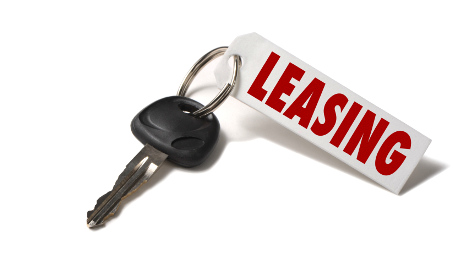When will off-lease reprieve happen?

The wave of off-lease vehicles volume is at its “high tide,” according to Scotiabank, which says lease return numbers — and their subsequent impact to used-car prices — should begin to calm down.
The peak in leasing growth was in 2013-14, the company said in its latest Global Auto Report. Lease penetration rates grew at an average of 2.5 percentage points per year in those two years, climbing from 22 percent to 27 percent.
The growth rate during those two years was twice as much as the average annual growth rate during the 15 years prior, Scotiabank said. Put in hard numerical terms, that 5-percentage-point growth over two years equaled close to 1.5 million units being added to the leasing pool, according to its report.
With those cars now coming out of those leases and hitting the remarketing segment in droves — off-lease volume is up 30 percent year-over-year, according to the report — it has spawned the current “price scare,” the company said.
Among the factors Scotiabank suggests is pushing the used-car price handwringing have been: 1) news of the country’s largest car renter seeing lower residual values drive its quarterly losses further than anticipated, and 2) rising lease returns.
But that aforementioned lease return growth and its price impact won’t last long.
“We believe that the industry is currently in the ‘eye of a used-car price storm,’ and that pricing will stabilize later this year once the growth in off-lease vehicles moderates,” Scotiabank senior economist and auto industry specialist Carlos Gomes said in a news release.
“Our expectation is that weakness in retail activity will prove to be temporary, as it likely reflects a shift among many consumers into used vehicles, due to improving affordability,” Gomes said.
That’s not to say leasing stopped growing. It didn’t.
But the growth in the number of cars leased became less rapid. Last year, the growth was less than 400,000 units, compared to the aforementioned growth of 1.5 million units (combined) over the course of 2013 and 2014, according to Scotiabank.
At the moment, the market is still in the thick of the off-lease wave.
And some would argue that it’s not done.
“The leasing surge we’ve seen over the past few years is taking hold and changing the face of the used-car market,” Edmunds senior analyst Ivan Drury said in a news release accompanying the firm’s latest Used Vehicle Market Report. “With new-vehicle sales already beginning to stagnate, swollen inventories of off-lease used vehicles hitting the market and priced to move may cannibalize new-car sales and further strain residual values.”
The first quarter retained value on 3-year-old vehicles has slipped each year since 2012, according to Edmunds. In the most recent period, it was at 64.5 percent, down from 65.6 percent in Q1 2016 and 68.5 percent in Q1 2012.
The report says that residuals are being pressured by off-lease volumes that flooded the market.
“Lease returns will continue to flood the market over the coming years, while older used vehicles are poised for higher prices due to the supply shortage,” said Drury.
In the report, Edmunds also suggests that “leasing’s supply of near-new is forecast to last nearly three more years.”
A chart in the Edmunds report shows that lease penetration (31.7 percent) and lease volume (1.02 million units) in the first quarter of this year, while high, were down slightly from year-ago levels. That said, the report notes: “While older used vehicles are poised for higher prices due to the supply shortage, lease returns will continue to hit the used market at elevated levels for the next two years, further reducing the values of near-new vehicles as we saw at the start of 2017.”
In a press conference earlier this year at the NADA Convention and Expo, Cox Automotive Inventory Solutions president Janet Barnard said the peak in off-lease volume will be in 2020, when 4.6 million cars come off lease.

 View The Latest Edition
View The Latest Edition

